
The Professor reviews the IPX4 water resistant EcoFlow Glacier convertible dual zone refrigerator freezer with built in DC ice machine, 300wh lithium battery, and 240w solar input.
WATCH IT HERE
Intro:
-
Ecoflow has been on a roll in 2023 releasing a slew of innovative products from whole RV systems to robotic lawnmowers. It seems as though they are reinventing everything except the kitchen sink. Today we have a product called the ECOFLOW GLACIER that is their debut attempt at a battery powered dual zone fridge freezer with a built in ice maker. But, is it any good? Let’s find out!
Quirks & Features:
-
Main Features:
-
The Glacier is a 38L or 40 Quart dual zone fridge freezer, convertible from dual zone to single zone and back with a removable / storable center partition. Unlike most other fridges with this feature, this one will remember the temperature setting when you add or remove the partition. One feature I really like is that the partition once removed just snaps right into the lid for long term storage. I wish other brands would do this. [b-roll]
-
The main feature on the Glacier fridge of course is its built in 120w DC ice maker that can whip out a batch of 18 hollow ice cubes in about 12 minutes.
-
It can also be directly powered by an optional 300wh hot swappable battery and this battery can be charged with up to 240w of solar plugged directly into the fridge via xt60 connector. You can not power the fridge directly with a solar panel. The battery is required for solar charging. The battery is NMC lithium rated 800 cycles to 80% capacity which is what you have to expect since space inside the fridge is at a premium and a LiFePO4 battery would be much larger.
-
Of course you can also power the fridge directly with 12v from the included vehicle adapter but be aware that the ice maker will not work in 12v mode. You need to either plug it into 24v DC, AC power, or use the battery to generate ice. Note the fridge does come with both AC power brick and a 12v/24v vehicle adapter.
-
The fridge is IPX4 water resistant which means it can handle water splashing (aka rain drops) from any direction so you can comfortably leave it out in the rain no problem.
-
Also unlike most portable fridges this one lets you set the temperature all the way down to -13F which is deep freezer territory. This is thanks to that massive 120w compressor. Most fridges out there max out at 60w and -4F.
-
For those living or camping in desert environments this fridge is rated to function in ambient temperatures up to 122F
-
-
Size/Weight: approx 31x15x18 @ 50lbs
-
Build: Build quality is impressive. It does have a built in light and drain like any good fridge. It has a side opening door that most folks seem to like and removable carrying handles.
-
Note to all the folks that gripe about portable fridges that come in dark colors. It says in the manual that you are not supposed to operate it in direct sunlight. Treat it like a power station, keep it in the shade, and the color will make absolutely no difference.
-
Display: The display is fantastic. It is not a touch screen but it is bright and easy to read in direct sunlight with 6 large buttons. Because it is IPX4 rated it means the display and buttons are all water tight so you don’t have to worry about ruining the screen in the weather.
-
Special Features (lid/handles/wheels/battery/solar): Ecoflow does offer an optional wheel and pull handle kit for those that prefer to drag instead of carry.
-
APP/Other Features: Of course the Ecoflow App works with the fridge and it gives you remote control for basic functions. (demo app)
-
Warranty: Ecoflow offers a standard 1 year warranty on the Glacier
Testing
-
(Dual Zone) 12hr consumption test at 0F/32F: 550wh/24hrs
-
Noise db on MAX: 48
-
Battery: 300wh
What I think:
-
When I first heard that Ecoflow was coming out with a fridge icemaker combo, I though to myself … how gimmicky. I really didn’t see the use case because I assumed the amount of power it would take to make ice would be energy prohibitive. Leave it up to Ecoflow to design what is probably the most efficient DC ice maker on the planet. I think that’s the real secret. They are using the power of a 120w DC compressor that can reach temperatures of -13F to make ice in a flash. Remember that most DC fridges have 60w compressors. Ecoflow doubled that in order to make ice efficiently. In fact, I’d say that it’s probably one of the only direct solar powered ice makers out there. You can literally make ice from the sun as long as you have a solar panel plugged in to the battery.
-
That being said, there are a few problems. First, the fridge/freezer itself is not the best insulated or most power efficient dual zone out there. For example, the ICECO I just reviewed uses about half the power of the Ecoflow. Now the ICECO doesn’t have a solar power option either. So effectively the Ecoflow runs for free, even if it does “waste” more power. It’s kind of an apples to oranges comparison but I do need to mention the Ecoflow fridge with its massive compressor does use more power than other brands.
-
The biggest bummer though is the fact that the Ecoflow doesn’t have a direct DC battery port for plugging in any of their external batteries. It seems like a huge oversight that Ecoflow’s own Delta 2 or Delta Max smart battery doesn’t plug directly into their fridge. Instead, you can only power direct with 12v output from other power stations and that doesn’t let you make ice (unless you opt for the internal battery). If you do install the internal battery on the fridge it will make ice regardless of the input voltage coming in and that’s important to remember. I think virtually everyone buying this fridge will have to opt for that internal battery for this very reason. Note that you can also charge the internal battery directly with DC by using the 100w bi-directional USB port. Since most modern Ecoflow power stations have a 100w USB-C then this would be faster and more effective than using the 12v cigarette socket.
-
Finally, what I don’t like about the ice maker design is that it easily collects debris and is quite difficult to clean. You’ll have to really get in there with a soapy rag and some pressurized water to clean the gunk out. Maybe more importantly is that you can only make one batch of ice at a time and then you have to drop whatever you are doing to empty the ice tray into another container in order to make another batch of ice. It’s not one of those ice machines that you just let run for a few hours and come back to a bucket of ice. It requires that you literally sit there and watch it make ice and then promptly remove it when it is done, or face the wraith of constant beeping until you do. I understand that this is a super compact ice machine with no moving parts, but it’s also high maintenance.
-
Don’t get me wrong. I do absolutely love the ice maker’s efficiency. I’ve never made ice before so quickly and with so little power. It’s almost worth the price of entry alone to be able to fill up the freezer side with ice made from the sun just to make some snow cones in the desert and totally blow people’s minds at camp. If you’re a person that loves ice, it doesn’t get more efficient to make than this.
Pricing and competition
-
Product Price with current discounts:
-
The Glacier retails for $999. If you consider that price otherworldly, you need to factor in that a decent ice maker alone is going to run a couple hundred bucks and won’t run directly from DC power. In fact, most ice machines require at least a 1000w inverter to run meaning a dedicated mid size power station just to make ice – and they are huge power hogs. You certainly won’t be making a cup of ice for only 15wh like the Glacier. The fact this combines a high end solar powered battery operated refrigerator with a very efficient ice maker and you don’t need to purchase or haul around a separate 1000w solar generator to run it, the cost seems far more reasonable.
-
That being said, viewers of HOBOTECH will not pay the retail price, as I did score an exclusive discount code that will knock a few bucks off the price for a limited time only.
-
-
Main Competitor:
-
As for competition there isn’t any that I know of as I believe this is the first product of its kind on the market. Of course by this time next year there will be 100 different models, but if you want an ice making portable fridge for the summer of ‘23 this is going to be your only choice.
-
-
If you’re interested, use this link and code HBGLACIER at checkout for the best price online!
ECOFLOW GLACIER
Ice Maker Refrigerator
Use code HBGLACIER
GO TO ECOFLOW
GROWATT INFINITY 1300
1800w LFP Power Station
Use code HOBOFANS
GO TO GROWATT
ICECO APL55 58qt
Multi Zone Fridge
Use code HOBOTECH
GO TO ICECO
EcoFlow River 2 Pro
800w UPS Generator
Use code EFHOBOTECH8
GO TO ECOFLOW
Jackery 3000 Pro
3000w UPS Generator
Use code HOBOTECH2023
GO TO JACKERY
Growatt Vita 550
600w Solar Generator
Use code OLHOBOFANS
GO TO GROWATT
Growatt Infinity 1500
2000w Solar Generator
Use code HOBOSFANS
GO TO GROWATT
Bluetti PV420 420w
Portable Solar Panel
Use code HOBOPV420
GO TO BLUETTI
Dr. Prepare 100ah
LiFePO4 PowerMax Battery
Use code HOBO7
GO TO DR PREPARE
Power Queen 190ah
LiFePO4 Drop In Battery
Use code HOBO9 for $605 offer
GO TO POWER QUEEN
Vigorpool Captain 1200
UPS LFP Parallel SoGen
GO TO VIGORPOOL
ZENDURE SBP 2000
SOLAR GENERATOR
$100 OFF code HOBOSBP
GO TO ZENDURE
BLUETTI EB3A UPS
SOLAR GENERATOR
Use code HOBOEB3A
GO TO BLUETTI
RUNHOOD POWER
MODULAR GENERATOR
GO TO RUNHOOD
ECOFLOW WAVE
BATTERY POWERED A/C
Use code HOBOTECHWAVE
GO TO ECOFLOW
RENOGY LYCAN 5000
4800wh UPS Waterproof
Solar Generator
12% off with code HOBOLYCAN1
GO TO RENOGY
—
GOT RENOGY SOLAR PANELS?
Renogy 450w solar panels: https://hobos.cc/ren450
Renogy 175w solar panels: https://hobos.cc/ren175
Use code HOBOPANEL for 10% off
ACOPOWER
LiON Mini Fridge
$226 Super Early Bird!
GO TO ACOPOWER
BougeRV 1200w
1100wh SoGen
$719 code HOBOTECH10
GO TO BOUGERV
Jackery 2000 Pro
2200w UPS SoGen
$2069 code HOBOTECH
GO TO JACKERY
ICECO JPPRO 12v Fridge
Only $479 for a limited time!
GO TO ICECO PAGE
PECRON E3000 3108wh
Only $1899 for a limited time!
Use code HOBOE3000 until May 7th
GO TO PECRON SITE
BIGBLUE CELLPOWA 2500w
Only $1099 for a limited time!
GO TO BIGBLUE SITE
BLUETTI EP500 PRO
See the review?
GO TO BLUETTI POWER SITE
//-AC300 & B300 Deals-//
B300 (solo) Use code HOBOB300 https://bit.ly/3hyROWi
AC300+B300 Use code HOBOAC3001B https://bit.ly/398DDm1
AC300+2xB300 Use code HOBOAC3002B https://bit.ly/3Aq3OAs
AC300+2xB300+3xPV200 Use code HOBOAC300COMBO2 https://bit.ly/3tJHFuD
2xAC300+2xB300+P030A Use code HOBOAC300COMBO1 https://bit.ly/3lpWoXU
AC300+4xB300 Use code HOBOAC3004B https://bit.ly/3tVd1Pb
2xAC300+4xB300+P030A Use code HOBOAC300COMBO3 https://bit.ly/2Xmd8XL
2xAC300+4xB300+6xPV200+P030A Use code HOBOAC300COMBO4 https://bit.ly/2XmDDfp
//-AC200Max & B230 Deals-//
B230 (solo) Use code HOBOB230 https://bit.ly/3EiO4Sk
AC200MAX Use code HOBO200MAX https://bit.ly/3EiOBni
AC200Max+B230 Use code HOBOMAXB230 https://bit.ly/3znZzEB
AC200Max+3PV200 Use code HOBOMAX3PV2000 https://bit.ly/39b8lLs
AC200Max+2*B230 Use code HOBOMAX2B230 https://bit.ly/3k9D7ue
AC200Max+2*B230+3*PV200 Use code HOBOMAXCOMBO https://bit.ly/3kb2A6w
//-AC200P-//
AC200P Use code HOBO200P https://bit.ly/3JSgGDR
AC200P+3xPV120 Use code AC200PV120 https://bit.ly/3555Yes
AC200P+3xPV200 Use code AC200PV200 https://bit.ly/3t9pPBg
//-UNDER 1000w-//
AC50S Use code HOBO50 (or HOBO50OR) https://bit.ly/3skt7me
EB55 Use code HOBO55 https://bit.ly/3hfqw6x
EB70S Use code HOBO70S Use code HOBO100 https://bit.ly/3C311iF
EB150 Use code HOBO150 https://bit.ly/3pgyr85
EB240 Use code HOBO3000 https://bit.ly/3Ka7drZ
EB55+PV120 Use code PVEB55 https://bit.ly/3BMIpDn
EB70S+PV200 Use code EB70S30 https://bit.ly/3sfYu1c
EB150+2xPV120 Use code EB150PV120 https://bit.ly/3t7PmuM
EB240+2xPV120 https://bit.ly/33OMk61
//-SOLAR PANELS-//
PV120 Use code HOBO100 https://bit.ly/3LZXAO3
PV200 Use code HOBO200 https://bit.ly/3vgmjrq
PV350 Use code HOB350 https://bit.ly/3hIr1Gs
//-ACCESSORIES-//
DC Charging Enhanncer(D050S) Use code HOBOENHANCER https://bit.ly/2Xs3mnd
Fusion Box Pro(P030A)Use code HOBOFUSION https://bit.ly/3AcUQqs
PV voltage step down module(D300S) Use code HOBOD300S https://bit.ly/3nByuv1
D050S+3*PV200+B230 Use code HOBOENHCOMBO1 https://bit.ly/3nzNKJ9
D050S+3*PV200+B300 Use code HOBOENHCOMBO2 https://bit.ly/2XhAuh1
–ALLPOWERS MONSTER PRO–
5000wh UPS LFP SOGEN
Only $3399 for a limited time!
That’s 67 cents per watt hour! Cheap!
GO TO ALLPOWERS SITE
OUPES 1200w Solar Generator
Only $765 for a limited time!
Use Code HOBOTECH for 15% off SITE WIDE
GO TO OUPES SITE
GET THE BLUETTI AC200P at the LOWEST PRICE EVER!
BLUETTI AC200P 2000wh LiFePO4
Only $1498 from BLUETTI
https://bit.ly/2T3xMJK
Use Code HOBO200P
or purchase from Amazon + tax support & Bezos Yacht Fund
PLEASE SUPPORT US BY BUYING DIRECT FROM BLUETTI
BEZOS DOESN’T NEED ANOTHER YACHT!
MONTEK X-1000 Water Resistant 1000w SoGen
MONTEK X-1000 (with 80w panel): http://shrsl.com/3cm8o use code HOBO1000 for $100 off!
ACOPower LiONCooler Pro Solar Fridge
https://bit.ly/3Dp5hYH
ANKER 521 256wh LFP Power Station
https://amzn.to/3nZUT51
BLUETTI AC300
3000w Solar Generator
“BEST SOGEN AVAILABLE IN 2021!”
ON SALE NOW!
Use the codes / links below!
//-AC300 & B300 Deals-//
B300 (solo) Use code HOBOB300 https://bit.ly/3hyROWi
AC300+B300 (review bundle) Use code HOBOAC3001B https://bit.ly/398DDm1
AC300+2xB300 Use code HOBOAC3002B https://bit.ly/3Aq3OAs
AC300+2xB300+3xPV200 Use code HOBOAC300COMBO2 https://bit.ly/3tJHFuD
2xAC300+2xB300+P030A Use code HOBOAC300COMBO1 https://bit.ly/3lpWoXU
AC300+4xB300 Use code HOBOAC3004B https://bit.ly/3tVd1Pb
2xAC300+4xB300+P030A Use code HOBOAC300COMBO3 https://bit.ly/2Xmd8XL
2xAC300+4xB300+6xPV200+P030A Use code HOBOAC300COMBO4 https://bit.ly/2XmDDfp
//-AC200Max & B230 Deals-//
B230 (solo) Use code HOBOB230 https://bit.ly/3EiO4Sk
AC200MAX Use code HOBO200MAX https://bit.ly/3EiOBni
AC200Max+B230 Use code HOBOMAXB230 https://bit.ly/3znZzEB
AC200Max+3PV200 Use code HOBOMAX3PV2000 https://bit.ly/39b8lLs
AC200Max+2*B230 (review bundle) Use code HOBOMAX2B230 https://bit.ly/3k9D7ue
AC200Max+2*B230+3*PV200 Use code HOBOMAXCOMBO https://bit.ly/3kb2A6w
//-Other Models-//
AC200P 2000wh https://bit.ly/2T3xMJK use code HOBO200P
EB70 700w LiFePO4 https://bit.ly/2SfeEIK use code HOBO70
EB55 700w LiFePO4 https://bit.ly/3CmRHFq use code HOBO55
AC50s 500wh https://bit.ly/3uNec1O use code HOBO50
AC50s (orange) https://bit.ly/2T1TUEx use code HOBO50OR
EB240 2400wh https://bit.ly/3cjMseB use code HOBO3000
EB150 1500wh https://bit.ly/3plw3vL use code HOBO150
//-Solar Panels-//
BLUETTI PV200 200w Solar Panel https://bit.ly/31b1n8o use code HOBO200
BLUETTI PV120 120w Solar Panel https://bit.ly/3Emrtn8 use code HOBO100
//-Accessory Deals-//
DC Charging Enhanncer(D050S) Use code HOBOENHANCER https://bit.ly/2Xs3mnd
Fusion Box Pro(P030A) Use code HOBOFUSION https://bit.ly/3AcUQqs
PV voltage step down module(D300S) Use code HOBOD300S https://bit.ly/3nByuv1
D050S+3*PV200+B230 Use code HOBOENHCOMBO1 https://bit.ly/3nzNKJ9
D050S+3*PV200+B300 Use code HOBOENHCOMBO2 https://bit.ly/2XhAuh1
HIBOOST BOOSTERS!
-> https://bit.ly/3DLf0Kn <-
Use code HOBO20 for 20% off the OTW, RV, and Car boosters.
Use code HOBO15ALL for 15% off everything else SITE WIDE! (including home boosters!)
NEW BLUETTI AC200Max !
AC200Max: use code HOBO200MAX https://bit.ly/3mjdKIa
AC200Max+B230: use code HOBOMAXB230 https://bit.ly/3xZJCUg
AC200Max+2*B230: use code HOBOMAX2B230 https://bit.ly/3z3L8Gh
AC200Max+2*B230+600w solar: use code HOBOMAXCOMBO https://bit.ly/3D1SEUr
AC200Max+600w solar: use code HOBOMAX3PV2000 https://bit.ly/2WbTMnS
BROWSE OTHER DEALS: https://bit.ly/3ydwhId
SUNGOLDPOWER 130w v.2 Suitcase Kit
is BACK !
Use code HOBOTECH at checkout
GET IT AT SUNGOLDPOWER
Watch the original V.1 review video HERE
Amazon (no discount): https://amzn.to/3iJFRht
JACKERY EXPLORER 1000
GET IT AT JACKERY (save tax)
use code HOBOTECH at checkout!
Amazon: https://amzn.to/38TEJiR
CANADA https://amzn.to/3d7ll5g
PLEASE SUPPORT US AND NOT BILLIONAIRES BY BUYING DIRECT!
ECOFLOW DELTA PRO
3600w LiFePO4 UPS Power Station
CHECK IT OUT HERE
ICECO Refrigerators
->CLICK HERE for BEST DEALS!<-Use code HOBOTECH at checkout!
BOUGERV DEALS!
BOUGERV 180w Solar Panels
Use code HOBOTECH at checkout for 12% off the ENTIRE Solar Catalog!
Get BOUGERV 180 WATT SOLAR PANELS HERE
BougeRV Cheap REFRIGERATORS!
Use code HOBOTECH20 for 20% off all models!
53qt use code HOBOTECH90 for $90 off!
BUY DIRECT FROM BOUGERV
Wanna buy Bezos another Yacht instead?
53qt (Canada) https://amzn.to/332dgeX use code V7DIVCAB
The 5100wh Home Backup BEAST!
BLUETTI EP500 / EP500 PRO
GET IT NOW
JACKERY EXPLORER 1500
GET IT AT JACKERY (save tax)
Amazon +tax: https://amzn.to/3sUvbyU
PLEASE SUPPORT US AND NOT BILLIONAIRES BY BUYING DIRECT!
JACKERY SG1500 + 4x100w Panels
GET IT AT JACKERY (save tax)
on Amazon +tax: https://amzn.to/3rQCFld
PLEASE SUPPORT US AND NOT BILLIONAIRES BY BUYING DIRECT!
BLUETTI EB70 700w Solar Generator
Use Code HOBO70 for $100 off
GET IT AT BLUETTI (save tax)
Only red & gray available. Mint green is sold out.
PLEASE SUPPORT US AND NOT CORPORATE BILLIONAIRES BY BUYING DIRECT.
AMAZON TAKES UP TO 25% FROM SELLERS!
HIBOOST RV BOOSTER
GET IT AT HIBOOST
Use code HOBO20 for 20% OFF all mobile units!
JACKERY 300 Version 2.0!
Get it at the new low price of $299!
Jackery Direct (save tax) https://bit.ly/2QEQ9AB
On Amazon (+tax): https://amzn.to/3lCbbhl
PLEASE SUPPORT US BY BUYING DIRECT FROM JACKERY
BEZOS DOESN’T NEED THE HELP!
ALP 1000w Generator + Free Tank Hose
Get the ALP in several color choices for $499
1) Add generator to cart: ALP Generator
2) Add hose to cart: Generator Hose
3) Use code HOBO1020 at checkout!
ECOFLOW DELTA 1300 $1149
EcoFlow Store Page!
Use code EFHOBOTECH50 !
BLUETTI AC50S Solar Generator
— ->CLICK HERE for BEST DEAL!<- —
Use code HOBO50
Or buy on Amazon: https://amzn.to/36fwWg0
ICECO JP Series Refrigerators 20% OFF!
— ->CLICK HERE for BEST DEAL!<- —
Use code HOBOTECH at checkout!
HIBOOST 4G Signal Boosters
–> CLICK HERE FOR BEST DEAL! <–
Use code 2CX3RBZJ for 10% off SITE WIDE!
NEW! Use code XRMJT8WE for 20% off RV CELL BOOSTER!
ACOPOWER LiONCooler: https://www.acopower.com/
Use code HOBOTECH at checkout for 10% off!
SUNGOLDPOWER 130w Suitcase Kit is BACK
for $208! Use code 15HOBOTECH
Watch the original review video HERE
–> CLICK HERE for Amazon Page <–
Using the preferred “Best Deal” links helps support the channel!
Visit hobotech.tv/amazon for ALL products and discounts!
HOBOTECH is viewer supported. When you buy through these links we may earn an affiliate commission. As an Amazon Associate I earn from qualifying purchases.
#reviews #generators #offgrid














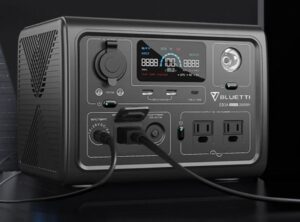
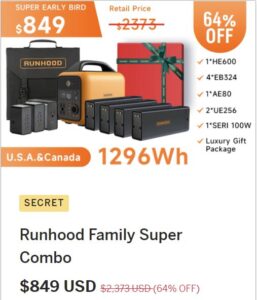






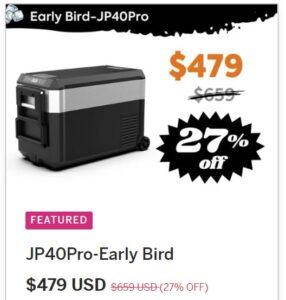












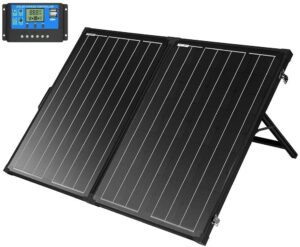









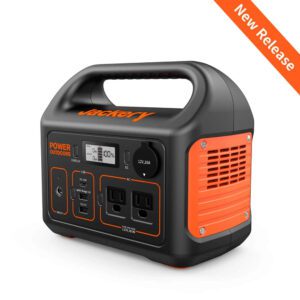


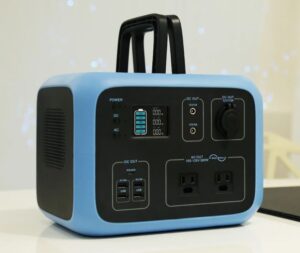







You must be logged in to post a comment.